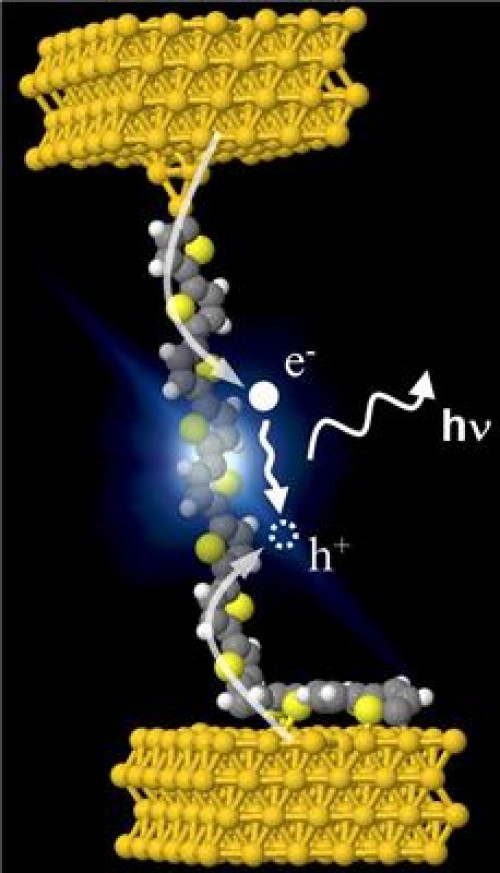First single-molecule LED
February 5, 2014

Artist impression of electroluminescence in a single polythiophene molecular wire (credit: Guillaume Schull, IPCMS (CNRS/Université de Strasbourg)
The first single-molecule LED has been created by researchers at IPCMS in Strasbourg and the Institut Parisien de Chimie Moléculaire (CNRS/UPMC).
The device, formed from a single polythiophene chain placed between the tip of a scanning tunneling microscope and a gold surface, emits light only when the current passes in a certain direction.
This experiment sheds light on the interactions between electrons and photons at the smallest scales, and represents another step towards creating components for a molecular computer in the future.
Light emitting diodes are components that emit light when an electric current passes through them and only let light through in one direction. A major advantage of LEDs is that it is possible to make them very small, so point light sources can be obtained.
Polythiophene is a good conductor of electricity, and is used to make larger LEDs already on the market.
From a fundamental viewpoint, this device gives researchers a new tool to probe phenomena that are produced when an electrical conductor emits light and it does so at a scale where quantum physics takes precedence over classical physics.
Scientists will also be able to optimize substances to produce more powerful light emissions. This work is a first step towards making molecule-sized components that combine electronic and optical properties. Similar components could form the basis of a molecular computer, the researchers say.
Abstract of Physical Review Letters paper
The electroluminescence of a polythiophene wire suspended between a metallic surface and the tip of a scanning tunneling microscope is reported. Under positive sample voltage, the spectral and voltage dependencies of the emitted light are consistent with the fluorescence of the wire junction mediated by localized plasmons. This emission is strongly attenuated for the opposite polarity. Both emission mechanism and polarity dependence are similar to what occurs in organic light emitting diodes (OLED) but at the level of a single molecular wire.